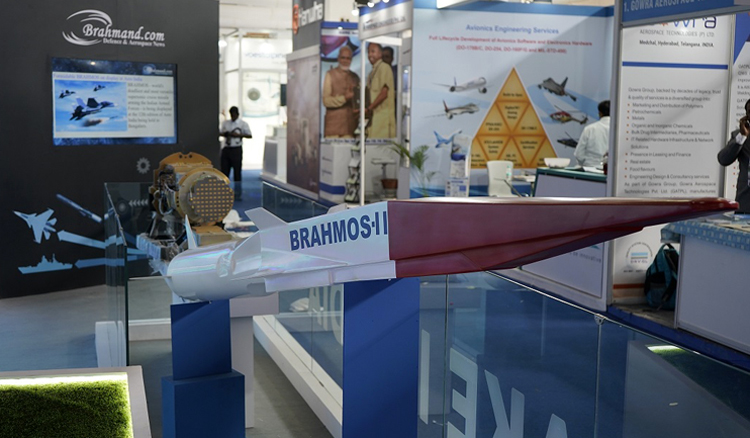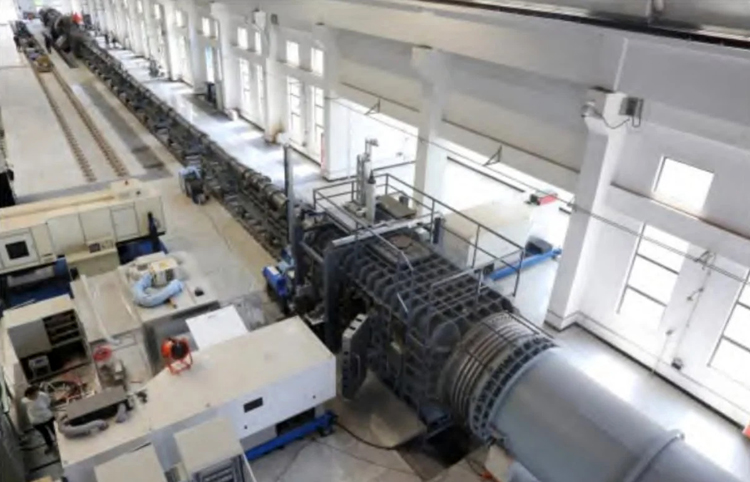INDIAN ARMED FORCES CHIEFS ON OUR RELENTLESS AND FOCUSED PUBLISHING EFFORTS

The insightful articles, inspiring narrations and analytical perspectives presented by the Editorial Team, establish an alluring connect with the reader. My compliments and best wishes to SP Guide Publications.

"Over the past 60 years, the growth of SP Guide Publications has mirrored the rising stature of Indian Navy. Its well-researched and informative magazines on Defence and Aerospace sector have served to shape an educated opinion of our military personnel, policy makers and the public alike. I wish SP's Publication team continued success, fair winds and following seas in all future endeavour!"

Since, its inception in 1964, SP Guide Publications has consistently demonstrated commitment to high-quality journalism in the aerospace and defence sectors, earning a well-deserved reputation as Asia's largest media house in this domain. I wish SP Guide Publications continued success in its pursuit of excellence.
- Prime Minister Modi Visits Punjab’s Adampur Air Base, Interacts with Airmen after Successful ‘Operation Sindoor’; Stern Message to Pakistan
- The layered Air Defence systems that worked superbly, the key element of Operation Sindoor
- Operation Sindoor | Day 2 DGMOs Briefing
- Operation Sindoor: Resolute yet Restrained
- India's Operation Sindoor Sends a Clear Message to Terror and the World – ‘ZERO TOLERANCE’
- Japan and India set forth a defence cooperation consultancy framework, talks on tank and jet engines
Advances in Hypersonic
The developments in Hypersonic technology no doubt would be potential force multiplier for the Indian Armed Forces when operational, given the expanding China threat
 |
The Author is Former Director General of Information Systems and A Special Forces Veteran, Indian Army |

It has been covered in these columns earlier that with the successful test-firing of the Hypersonic Technology Demonstrator Vehicle (HSTDV) on September 7, 2020, India became the fourth country in the world after the US, China and Russia to develop and test hypersonic technology. Aside from being a dual-use technology that will have multiple civilian applications (including the launching of small satellites at low cost), the HSTD leads the way to developing missiles that would travel at six times the speed of sound.
Defence sources had also said that with this successful test, India will be making its first hypersonic missile in the next five years, the hypersonic version of the BrahMos cruise missile. There was speculation in media during 2021 that BrahMos-II is expected to develop a speed exceeding Mach 6, possibly reaching Mach 8, and a range of 600 km that could be extended to 1,000 km. BrahMos Aerospace is also developing the next generation BrahMos NG, having a land-based variant for the Indian Army, a variant for the Indian Air Force and a ship and submarine-compatible variant for the Navy.
The above developments no doubt would be potential force multipliers for the Indian Armed Forces when operational given the expanding China threat. However, we do need to keep pace with developments in the hypersonic field that are taking place at incredible pace. According to another news report, the Ministry of Defence (MoD) has signed a deal with BrahMos Aerospace worth 1,700 crore for the acquisition of 35 additional dual-role capable surface-to-surface BrahMos missiles for the Indian Navy, to equip the two Project 15B Ships or the Visakhapatnam-class guided-missile stealth destroyers.
India will be making its first hypersonic missile in the next five years, the hypersonic version of the BrahMos cruise missile
Media reports of September 2022 reveal that China has built the world’s largest piston-driven shock wind tunnel in Mianyang, Sichuan Province which can simulate flight conditions at 11.5 km per second, or “more than 33 times the speed of sound” for hypersonic weapon research and space programmes. The project will enable high-quality, low-cost wind tunnel tests for hypersonic research.
Based on a design made by an Australian scientist, this piston-driven shock wind tunnel or tube is roughly twice as large as similar facilities in the West, with a diameter of 80 cm (2.6 ft). A large number of piston-driven wind tunnels have been constructed all over the world in recent decades. However, the largest expansion tube until now, with a diameter of around 40 cms, was the X3 Expansion Tube at the University of Queensland until recently.

Lyu Zhiguo, leading the team of researchers at the Hypervelocity Aerodynamics Institute under the China Aerodynamics Research and Development Center in Mianyang, has stated that China has built the world’s largest free-piston driven expansion tube wind tunnel with high enthalpy; heat intensity in the air is measured by enthalpy.
According to Chinese researchers, this new wind tunnel is expected to support a diverse range of missions; both military and commercial. Such missions are likely to include: launch of Chinese astronauts to the moon; development of hypersonic aircraft that could go anywhere in the world in “just one hour”; high-level national engineering projects like the lunar landing project’s return capsule; development of interstellar exploration aircraft that can enter alien atmospheres, and; scramjet-powered aircraft and missiles that can travel at hypersonic speeds.
China has built the world’s largest piston-driven shock wind tunnel which can simulate flight conditions of “more than 33 times the speed of sound” for hypersonic weapon research and space programmes
China also claims to have made a big breakthrough in hypersonic flight communication to maintain consistent contact with vehicles travelling at Mach 5 plus speed. According to scientists from the Beijing-based Science and Technology in Space Physics Laboratory, the system might enable ground control to maintain consistent communication with a hypersonic vehicle as it flies at a high altitude at speeds up to 20 times the speed of sound. Previous research by a different team of Chinese researchers had claimed that a hypersonic weapon could connect with and pinpoint targets using 6G technology, avoiding some of the blackout problems that arise at five times the speed of sound or faster.

In a report published in the Chinese journal ‘Missiles and Space Vehicles’ on August 10, 2022, Li Bin, leading the researchers team, called it a big breakthrough, implying that Chinese scientists could prevent the communication blackout that occurs when artificial objects (like ballistic missiles and re-entry capsules) achieve hypersonic speed in the atmosphere. According to tests performed, a high-frequency communication network comprising on-ground stations, orbiting satellites, and seagoing vessels may be used to overcome the communication blackout with a hypersonic missile; the network allowing real-time streaming of data collected by sensors on a hypersonic platform.
China also claims to have made a big breakthrough in hypersonic flight communication to maintain consistent contact with vehicles travelling at Mach 5 plus speed
Flight control for Chinese hypersonic weapons is primarily carried out in the military’s high-frequency Ka-band. Its signals have a stronger beam that can penetrate the plasma barrier. Bin’s team also discovered that a pointed tip at the front of the weapon could thin the plasma sheath and enhance communication. They also investigated gallium nitride (GaN) semiconductor technology for hypersonic communication. They discovered that employing GaN in the Ka-band power amplifier could help to resolve the tension between transmission power and power consumption.
With base stations in Africa, South Americaand Northern Europe, China has built one of the largest communication networks in the world. Relay satellites and signal tracking ships expand coverage to isolated regions like the Arctic and Pacific oceans. A number of recent tests have established that with this network, hypersonic weapon communication could be established in 0.8 seconds. China’s recent breakthrough in hypersonic communications, together with its reach of global network implies that the Peoples’ Liberation Army (PLA) would use it to gather intelligence and have the ability to launch precise attacks on targets anywhere in the world.





